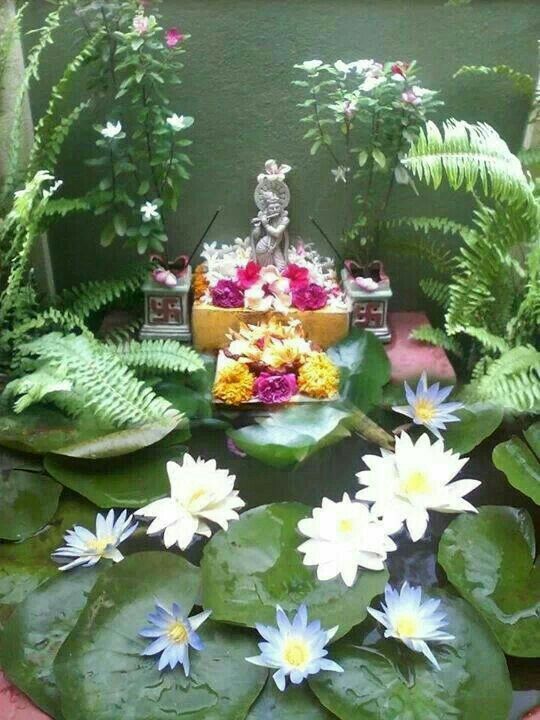
Got a new home? Setting up a pooja room is an exciting first step to bring in positivity and blessings. But in your eagerness, it’s easy to overlook key factors that determine how auspicious your sacred space will be. Avoid these common mistakes that can make your pooja room feel uncomfortable or inauspicious. Before shortlisting your favourite pooja room designs, consider a few key fectors to make the most of it. Start by picking the right direction according to Vastu Shastra, like the northeast corner of your home to maximize sunlight and energy flow.
Choose the ideal height off the floor and soothing, light colors for your walls. Make sure the size suits your space, and place it in a dedicated, quiet area away from busy rooms. Keep the pooja room squeaky clean, well-lit and ventilated. And carefully arrange the idols in a respectful manner. Follow these tips, and your new pooja room will soon become a beloved, spiritually uplifting part of your home.
1- Choosing the Right Direction for Your Pooja Room
One of the biggest mistakes people make is neglecting the principles of Vastu Shastra, an ancient Indian science of architecture and design that ensures harmony and positive energy in a space. Before finalising pooja room designs, choose the proper spot where you are going to place your temple and finding the right direction the key point here.
Ideal Direction for Pooja Room:
The pooja room should ideally be in the northeast corner of the house. This direction is considered the most auspicious as it receives maximum sunlight, which is believed to be purifying.
Alternative Directions:
If the northeast corner is not feasible, the east or north direction can also be considered for the pooja room.
2- Ideal Height and Size for Your Pooja Room Designs
Location and Space
The size and height of your pooja room depend largely on the space available in your home. If you have limited space, a small room or dedicated corner will work well. For larger homes, you’ll want to allocate a separate room as your pooja space. Either way, choose a spot removed from high-traffic areas and noise. The ideal pooja room designs should make you feel peaceful and content.
Platform Height
For the perfect height, use a raised platform or cabinet to elevate your pooja items 6 to 12 inches off the floor. This signifies the sacredness of the space and brings the deities to eye level, making it easier to pray. The exact height you choose depends on your preferences and physical needs. Go with pooja room designs that feel reverent yet comfortable for you.
click to rent small wood cabinet: https://cityfurnish.com/things/3866/belle-bedside-table
Adequate Room for Items
Choose specious pooja room designs that have enough space for all necessary items like idols, lamps, bells, and offerings. You’ll want room for a small table or cabinet for the idols, as well as space in front of it for you to kneel or sit. Include additional surface area for other pooja items. Your room should feel uncluttered but have a designated spot for everything.
Proportion to Your Home
As a general rule of thumb, your pooja room should be proportional to the size of your home. For a small apartment, a dedicated corner or closet works well. Larger homes can incorporate an entire room. Regardless of size, the most important thing is that you have a space specifically set aside for your daily pooja and meditation.
Your pooja room creates the ideal atmosphere for prayer and connection with the divine. By following the guidelines for an appropriate size, height, and location, you’ll design a space perfectly suited to your spiritual needs. Fill it with love, and your pooja room will become a cherished source of peace in your home.
3- Selecting Auspicious Colors for Your Pooja Room Designs
Light and Soothing Shades
Some of the most auspicious colors for a pooja room are light and soothing shades like white, light yellow or light blue. These colors create a calm and peaceful ambiance, ideal for meditation and prayer. They also reflect more light, which is purifying and enhances the positive energy in the space.
Shades of Saffron and Green
Shades of saffron and light green are also highly suitable for a pooja room. In Hinduism, saffron is considered the color of sacrifice and devotion, while green represents nature and new beginnings. Using these shades in a pooja room designs help to establish the right spiritual environment and mood.
Avoid Dark or Overly Bright Colors
It is best to avoid dark or overly bright colors in a pooja room. Colors that are too bold or bright can be distracting and jarring. Dark colors absorb light and make the space feel cramped, which is not ideal for prayer or meditation. Stick to soft, pastel shades that create a serene and peaceful ambiance.
Additional Tips
- Consider the size of your pooja room. Lighter shades work well for small spaces, while medium or deeper tones are suitable for larger rooms.
- Combine 2-3 complementary colors for visual interest. For example, pair light yellow with white or light blue with green. •Use accessories like diyas, candles, flowers, etc. to enhance the colors and ambiance.
- Paint the ceiling and doors in the same or lighter shade for a cohesive look. •Consider the colors of your deity images or idols and choose shades that will complement them.
4- Carefully Considering the Location of Your Pooja Room
Your pooja room is a sacred space, so choosing the right location is of utmost importance. The ideal spot is in the northeast corner of the home, which allows for maximum sunlight and positive energy according to Vastu Shastra principles. If that’s not possible, east or north-facing areas also work well.
Wherever you place it, be sure it’s in a dedicated, tranquil area away from disturbances. The kitchen, bathroom and under stairways are unsuitable locations that can disrupt meditation and prayer.
5- Additional Tips for Pooja Room Designs
Ventilation and Lighting
To keep your pooja room energized, make sure it has proper ventilation and natural lighting. Open windows and use fans to keep the air circulating and prevent the space from becoming stuffy, especially when burning incense or diyas. Maximize natural light by keeping curtains open during the day. Use blinds or curtains to control the amount of light and create an intimate ambiance during your prayers or meditation.
Cleanliness
A clean and uncluttered pooja room shows respect for the deities and the space. Dust idols, shelves, and floors regularly to remove any buildup of dirt or debris. Avoid storing items unrelated to worship in the pooja room. A cluttered or messy space can disrupt your focus during meditation or prayer.
Deity Arrangement
The idols and images of deities should be arranged properly and respectfully. Never place them directly on the floor. Use a platform, cabinet or shelf to elevate the idols. Arrange the idols according to proper puja vidhi or your family traditions. The central idol, usually of your ishta devta, should be placed slightly higher than the others. Face all idols towards the entrance of the pooja room.
Keep a bell in your pooja room to ring during aarti or other rituals. A diya for lighting lamps should also be included. You may want to display pictures of saints, gurus or other religious leaders who have special meaning for you. Include a seat, cushions or mats so you can sit comfortably during longer periods of worship or meditation. Consider adding decorative touches like garlands, candles or paintings to make the space feel special.
A thoughtfully designed pooja room will enhance your devotional experience and become a place of peace in your home. By following Vastu principles and considering practical elements like lighting, cleanliness and ventilation, you can create a sacred space perfectly suited to your spiritual needs. Focus on what will deepen your connection to the divine and support your religious practice. Your pooja room designs should be a reflection of your faith and a source of comfort.
click to read more pooja room ideas: https://cityfurnish.com/blog/pooja-room-decor-ideas
Take Away
So there you have it, my friend – the most common mistakes to avoid when setting up your new pooja room, and the right approaches to take instead. Follow the principles of Vastu Shastra to choose the ideal direction and location. Opt for light, soothing colors and elevate the space to create a divine atmosphere. Make sure the size is well-suited to your home. And keep it sparkling clean and clutter-free to show respect. Take these tips to heart, and your new pooja room design will become a peaceful, positive space for prayer and meditation. When designed and maintained properly, this little corner of your home can uplift your spirit and bring good vibes into your life.

